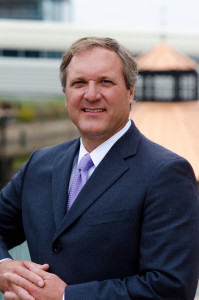By Gregory P. Heintschel, DDS, MBA
The Venn diagram can serve as a reminder for how to achieve excellence in the dental practice

The “pursuit of excellence,” “continuous improvement” and “patient-centered care” are catch phrases used with ever-increasing frequency within our profession. The questions for dental teams become, “What are we pursuing in becoming excellent?” “What are we improving?” “And just what does ‘patient-centered’ mean?”
To answer these questions, the dental office operation needs to be broken down into four basic parts. The first three – the core components – are clinical competency and standards, patient satisfaction, and margin (profitability). Overlaid on these is the fourth component, that is, the underlying ethos practiced in the pursuit of the first three.
These four parts are often presented as disparate entities with little interaction among them. Some presenters have gone so far as to say it is improbable that an office can achieve all four. Their message: “Determine which of the two you want to achieve.”
But I believe dental practices can – and should – strive to achieve all four components. The concept of Venn can help dental industry stakeholders, dental professionals, practice owners, and patients understand how to do that.
Venn diagram
 John Venn introduced the Venn diagram in 1880 to show all possible logical relations between a finite collection of sets. For our purposes, a Venn diagram provides a framework in which we can define and balance the components of excellence in dental operations. The Venn diagram can help the practice identify which aspects of the operation to emphasize or de-emphasize in order to obtain balance. It also provides a method to evaluate and monitor ongoing operations, and to minimize unintended consequences.
John Venn introduced the Venn diagram in 1880 to show all possible logical relations between a finite collection of sets. For our purposes, a Venn diagram provides a framework in which we can define and balance the components of excellence in dental operations. The Venn diagram can help the practice identify which aspects of the operation to emphasize or de-emphasize in order to obtain balance. It also provides a method to evaluate and monitor ongoing operations, and to minimize unintended consequences.
Venn also is used as an intentional play on the word “Zen.” When we achieve Venn, we often achieve Zen, that is, peace, harmony, enlightenment and balance. These are all highly desirable qualities in the practice and administration of a dental practice. Figure 1 illustrates a Venn diagram using the three vital components of a dental operation.
While each component – patient experience, clinical quality and margin – is an independent variable, a picture starts to materialize as we overlay each component onto each other. At the epicenter is the “sweet spot” of the operation, where balance and harmony among the three components is achieved. It is also in this area where our office Zen can be fully realized.
As you study the diagram, you can imagine the nearly infinite set of logical relations between these components. As an example, consider a dental office that strives to incorporate the highest standards of technical and clinical quality. What happens to profitability and the patient experience?
According to Venn, over-emphasizing clinical quality could come to the detriment of both the patient experience and office margins. Think back on that absolutely perfect crown that you attempted to achieve on that central incisor of a family member or other loved one. How much more time was involved than a traditional preparation? Did that not affect margin? Did that extra time you took in attempting the perfect restoration make the patient a little more uncomfortable with the procedure? Did that extra time also negatively impact the patient experience and satisfaction with the procedure?
No one is arguing that we shouldn’t always strive for a highly desirable clinical process or outcome. But stressing clinical competency without regard to the other components of Venn can lead to disastrous results. Most of us know, or know of, an exceptional clinician with equally exceptional clinical competency who failed in maintaining the sustainability and viability of the office.
At the same time, overly stressing or emphasizing profitability might negatively impact the clinical standard of care and patient satisfaction. If left unchecked, this could result in disastrous consequences for the office and likely, the patient.
The Venn model can be used to determine the culture, policies, and processes within a practice. It helps minimize surprises and negate unintended consequences of our actions.
The Venn approach also helps the practice define just what is meant by “excellence” in the dental office. The word is defined differently by the doctor and patient. For example, patients don’t talk about numbers or outcomes, but of their own experience. Thus, really two parameters exist – that of the patient and that of the learned health professional. A Venn approach encompasses and balances the expectations of each.
Underlying it all: Ethics
In our model, the ethos of the practice – the thing that guides its beliefs, behaviors and morals – overlays the three core components. Without a strong moral character, all actions can come into question and scrutiny. Figure 2 demonstrates how an organization’s ethos is to be ingrained in all actions.
Virtually all actions and decisions have some layer of ethical consideration attached to them. Contemporary dental ethics often calls for beneficence. We are called upon to not inflict harm, prevent harm, remove harm, and do or promote good. To put it in a patient perspective, that means do the right thing, for the right reason, and at the right time. With this in mind, actions and decisions become less parental in nature, and more aligned with advocacy on behalf of the patient. As balance and advocacy for the patient becomes commonplace, their response is highly favorable.
By maintaining Venn with the patient experience, patients are more likely to abide by office policies such as keeping appointments, paying their bills, and accepting recommended treatment. They are more likely to take responsibility for their oral health and in maintaining the dental services they received. Finally, patients who feel satisfied have fewer complaints and increased loyalty. As patient satisfaction rises, employee satisfaction commonly does as well. We all feel better about ourselves when patients are satisfied and show their appreciation. This sentiment is contagious, and can lead to office staff feeling more appreciated and more highly engaged. Staff turnover drops. Over time, the caliber of the dental team increases.
As we pay heed to appropriate and high clinical standards of care, our individual patient’s health will improve over time. Fewer incidents occur in their treatment. Our personal benchmarked standards, and those of the profession, improve over time. Costs for required treatment decline. As their patients’ dental health improves, the team can focus more on complex rehabilitation, cosmetic enhancements, and other advanced procedures. Remaining costs shift from treatment to prevention. On a larger scale, as individual health is improved, so too does the health of the communities in which we live and work.
Not to be minimized is our ability to do all this profitably. Profitability allows us to provide for a better life for our family and the families of our employees. It adds comfort to the viability of our operations and our livelihood. It helps us make needed investments to maintain our technological edge, and to provide a world class environment for our care to be rendered in.
With higher margins, some level of mission can be incorporated. “No margin, no mission,” said the late Sister Irene Kraus, CEO of the Daughters of Charity National Health System (now Ascension). The dental profession is blessed with many people serving a higher purpose. With improved financial results we can increase our ability to provide care for those without the financial ability to do so.
Dr. Heintschel is the president and chief executive officer of My Community Dental Centers (MCDC), a not-for-profit dental service organization in Boyne City, Mich. He has consulted, lectured and written extensively on issues related to continuous quality improvement in a patient-centered environment. He welcomes your comments and can be reached at [email protected]

